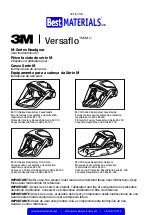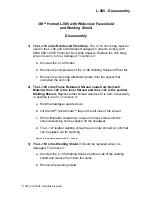
84
Do not apply protective wax on the braking parts,
disks and pads, as it could affect their operation.
Do not apply it on the saddle either, as it could
make it slippery and therefore be the cause of
a fall.
INACTIVITY
If the vehicle is not going to be used for several
months, it is advisable:
-
to clean and protect the painted parts by ap-
plying special waxes;
-
to drain all the fuel from the tank, close the
tap and make sure there is none in the float
chamber. To do this, close the tank tap and
start the vehicle. Wait for it to cut out on its
own;
-
remove the spark plug and pour a spoonful
of oil for two-stroke engines into the cylin-
der. Replace the spark plug and use the kick
starter to spread oil over the walls of the cyl-
inder;
- periodically check the tyre pressure;
- lubricate the chain;
-
cover the end of the exhaust pipe with a bag
and tie it tightly to prevent humidity from en-
tering;
-
cover the vehicle with a sheet (in cotton or
wool or other breathable material) that is
large enough to fully cover it but without
touching the ground.
AFTER A PERIOD OF INACTIVITY
-
Uncover and wash the vehicle, see page 83
(CLEANING).
- Fill the fuel tank, see page 69 (FUEL).
-
Carry out the preliminary checks, see page
58 (PRELIMINARY CHECKLIST).
Do a test run of a few kilometres at a moder
-
ate speed in an area with no traffic.
- instruments and indicators;
- silencer outlet;
- steering lock;
- radiator fins;
- fuel filler cap and other caps or plugs;
- lamps;
- electrical connections;
- decals.
Do not use alcohol, petrol or solvents to clean
plastic or rubber parts or the saddle.
NOTE:
to clean the external parts of the engine
only, use a degreasing detergent, brushes and
cloths, see page 135 LUBRICANTS table.
Using a high-pressure water jet could damage
certain vehicle parts.
Use a low-pressure water jet to rinse the vehicle
thoroughly and in particular the dirtiest parts. Us-
ing a soft sponge for the bodywork, wipe over
the whole vehicle.
Rinse the vehicle thoroughly, always using a
low-pressure water jet. Dry with a clean chamois
leather.
RULES FOR END OF WASHING
Braking efficiency could be reduced after wash-
ing, since brake disks and pads are wet.
It is therefore advisable to dry the disks well and
wait for the pads to dry, after which proceed with
caution and repeatedly try out the brakes.
Only after meticulous and thorough washing
should you proceed with polishing using silicone
wax.
RULES FOR WASHING
Do not wash the vehicle in direct sunlight, es-
pecially in summer, when the body is still warm
since the detergent would dry before rinsing and
could thus damage the paintwork.
Do not use liquids at a temperature over 40°C to
clean the plastic parts of the vehicle.
Do not direct high-pressure air (or water) jets or
steam jets onto the following parts:
- wheel hubs;
-
controls located on the right and left side of
the handlebar;- cuscinetti;
Do not use abrasive pastes on the vehicle, since
- bearings;
- brake tanks and pumps;
they ruin flat varnishes.














































